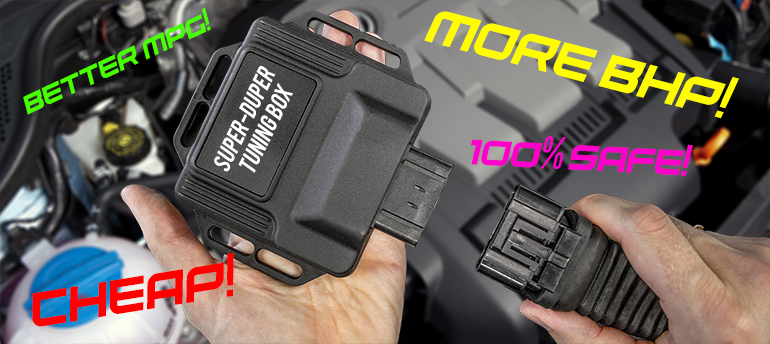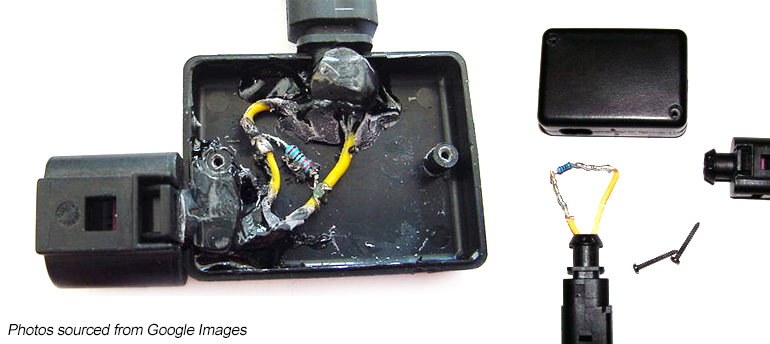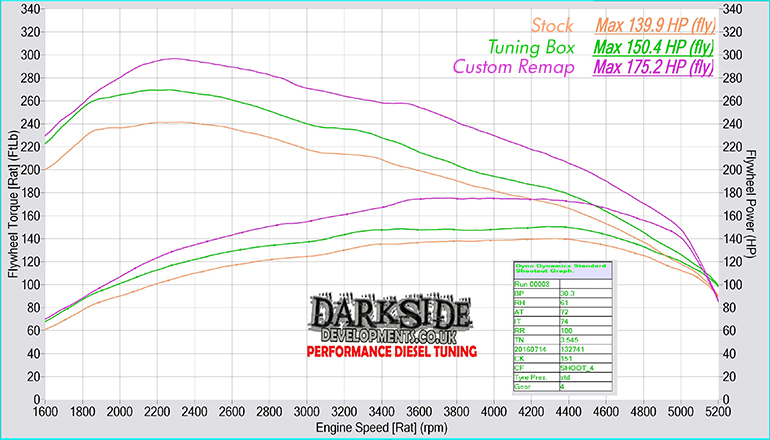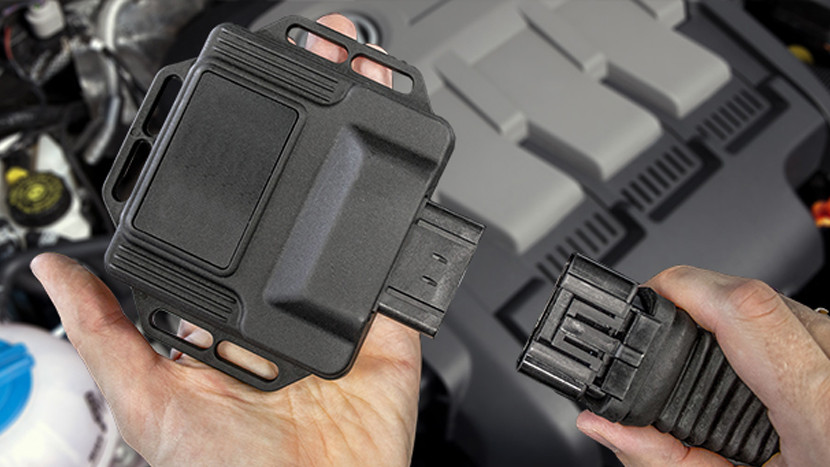Tuning Boxes
Imagine a small black box and a couple of cables. You open the bonnet of your car, locate the correct plugs, and plug it in. Secure the box somewhere safe in the engine bay. Instantly you have more power, torque and better fuel economy. There is absolutely no risk to your engine whatsoever, the gains are comparable to a remap, and it’s totally undetectable - if you need to take your car back to the dealer, just unplug the box and it will be like it was never there. Diesel tuning boxes make all these claims and more - so what are they? Are they really a viable alternative to a custom remap?

At its heart a tuning box is an incredibly simple device, which has existed in various forms for many years, but always using the same principle to achieve the power increase. They do this by taking advantage of the Closed Loop Control systems in the engine. (Take a look at our blog on engine control later).
A tuning box is designed to intercept and change signals back to the ECU, to fool it into making changes which result in more fuel being injected. The easiest sensor to fool in order to guarantee more fuel being injected is the rail pressure sensor, and this is the one most tuning boxes target. They are usually placed between the rail pressure sensor and the ECU to reduce the reading the ECU receives, in turn making the engine run with increased rail pressure. Increased rail pressure means the engine will get more fuel and make more power. This all sounds great, but there are two main problems.
Inside these fancy shiny boxes, usually there is nothing more than a resistor (costing pence from any electronics supplier). It is this resistor which fools the ECU into a false reading. The spec of this resistor is critically important to whether the system is safe. If there is only a mild increase in pressure, then it is unlikely that it will cause any damage. If that resistor value is wrong however, it can cause increased wear or a catastrophic failure of the high pressure fuel pump or injectors. These are some of the most expensive components in a diesel engine, and repairs can run into the thousands.

The second problem with fooling the engine in this way is that it will throw out all the complex calculations in the ECU which keep all the systems running correctly. Many of these tuning boxes claim better fuel economy - but a major reason for this is that the engine is being fooled into delivering more fuel than the ECU actually is aware of. This means you are very likely to see an improvement on your dashboard display, but may not see the same improvement at the fuel station.
A ‘twin channel’ tuning box intercepts and changes two signals rather than one. In a box like this, you will need to plug the box in between two sensors (usually rail pressure and boost pressure) and the box will then fool the ECU into injecting more fuel and running a higher boost pressure.
Recently manufacturers have released ‘twin channel’ and ‘intelligent’ tuning boxes, which are often marketed to suggest they allow a far higher level of control and complexity. In reality there is a limit to what these boxes can do, and it's very easy to tell what they are really capable of by which sensors you have to plug them into.
Below we mythbust a selection of dubious claims taken from a variety of Tuning Box websites:
CLAIM - With a tuning box the factory ECU limits are retained so the engine is 100% safe
This is false. A tuning box works by fooling the factory sensors into reading incorrect values, so any factory ECU limits are redundant as they are being fed false information.
CLAIM - Tuning Boxes save fuel
This could be true for some boxes. An increase in rail pressure can make the engine run slightly more efficiently. What is guaranteed is that any readout on your dashboard will appear to show an increase in economy, as the engine does not know that it is now delivering more fuel, so will calculate fuel consumption based on incorrect data giving a falsely better reading.
CLAIM - Tuning boxes are safer for the engine than a remap
This is false. While tuning boxes can be safe, the safest way to perform any tuning on your car is by logging the vehicle data and a Custom Remap by a professional. Without instrumenting additional sensors it is impossible to even know what the true values of some sensors are, as the tuning box adjusts the data to the ECU.
CLAIM - Tuning boxes can produce the same improvements as a remap
This is false. In order to achieve the ultimate safe performance far more parameters in the ECU must be changed than a tuning box of capable of adjusting. A tuning box will usually adjust a maximum of two signals, fuel and boost. A good remap will involve adjustment of numerous values and maps including boost pressure, boost control, torque limits, injection timing, rail pressure, fuel quantity, EGR and throttle mapping. There are also numerous other things that a tuning box cannot do, such as accounting for certain hardware changes, adjusting rev limiters and many other things that are possible when remapping.
The graph below shows real testing on our dyno. The vehicle was a bog standard Golf Mk6 2.0 CR140

CLAIM - Tuning boxes are more cost effective than a remap
A good remap for a standard car will cost £300-600 and involves at least a few hours of an experts time, datalogging and checking your vehicle, identifying any issues, then custom tuning the vehicle on a rolling road with full before and after dyno figures, followed by final road testing and datalogging to ensure the vehicle is behaving as it should. All of this will be performed using equipment which can run into hundreds of thousands of pounds.
A tuning box costs between £100-300, and consists of some wires, a box, and at worst a resistor, or at best a resistor on a circuit board with some degree of adjustability and monitoring of a couple of parameters. A quality product should have been developed on your exact engine, however many tuning boxes are very generic and in reality the exact same box is the one they sell for hundreds of different vehicles. You will have no idea of the health of your vehicle before or after, you will have to believe the often inflated power claims made by the box manufacturer, and you will have no idea whether your vehicle is running correctly afterwards unless you run into issues.
DPF issues seem to be the greatest concern for cars running tuning boxes, tricking sensors will cause a lot of miscalculations that will certainly cause issues with the regeneration strategies. With a DPF replacement on most modern cars being a 4 figure job, it’s usually not a risk that is worth taking.
Bearing all that in mind we will leave it up to you to decide which represents better value for money.
Recent Posts
-
Silverstone GP - ClubEnduro - 750MC - 29th October 2023
An unusual calendar for 2023 meant that round 7, the final round of the season for the 750MC Club En …23 11 2023 -
750MC Birkett Relay - Silverstone GP - 28th October 2023
With a hectic season of racing almost to a close, we were back at Silverstone for the 750 Motor Club …15 11 2023 -
Snetterton 300 - BRSCC TTCR - 13th-15th October 2023
For Round 6 of the BRSCC Audi TT Cup Racing, we were at Croft, which turned out to be VERY eventful …20 10 2023




